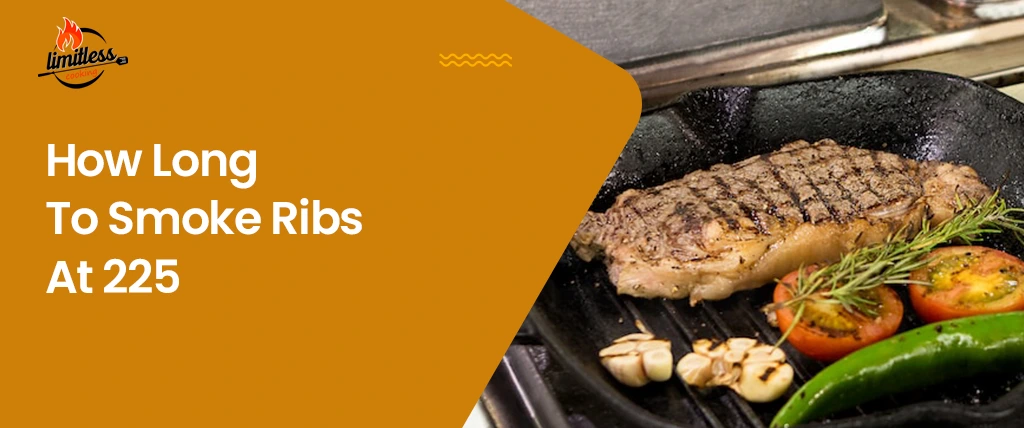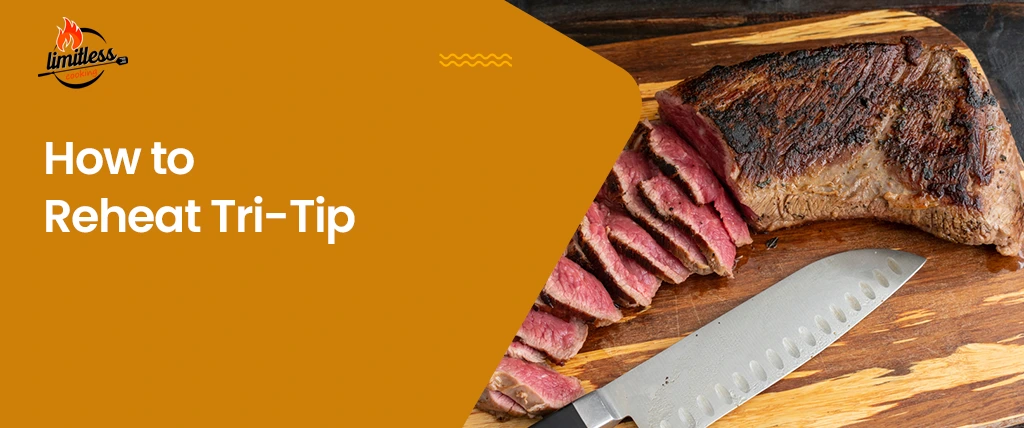How To Reheat Frozen Pasta? 4 Best Ways
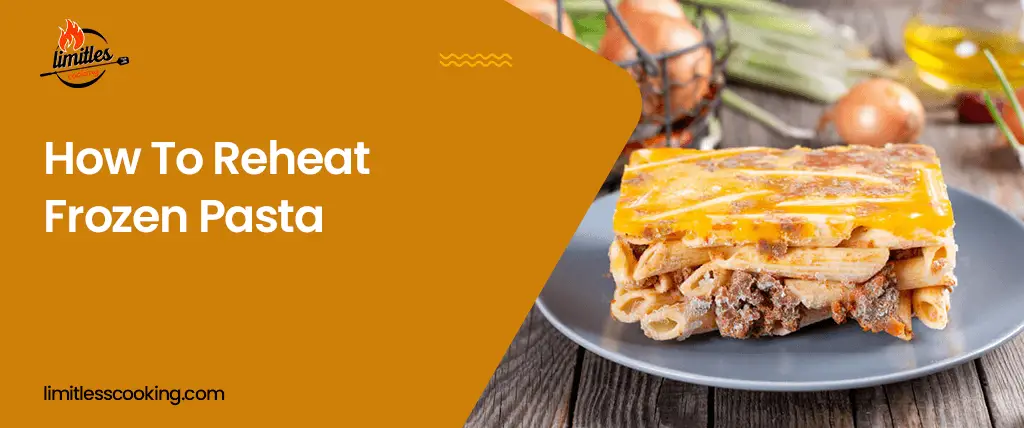
Ending with pasta leftovers or storing pasta in the fridge or freezer for later use can be the situation when you need to reheat your pasta.
Heating leftover pasta, especially with pasta sauce, can be tricky; however, you can still reheat your pasta quite easily and make it taste as good as the first day.
Without any further ado, let’s dive into the methods to reheat pasta in the best ways. So, keep scrolling to find the reheating way that suits you the most.
How to Thaw Frozen Pasta?
Before you reheat your frozen pasta, you need to defrost the pasta. There are many ways to thaw frozen pasta.
Transfer the Pasta to the Fridge
If you want to eat your frozen pasta the next day, it’s better to transfer it from the freezer to the fridge and leave it there overnight. Though time-consuming, it’s the safest and recommended way to thaw frozen pasta or any frozen food.
Turn to the Microwave
If you are craving pasta, want to have it right away, and luckily you have some leftovers, you can directly microwave it to defrost and reheat it. Microwaving is the quickest way to do it. You just need to set the defrost mode or lower your microwave power to 50% and wait around a minute to defrost your pasta.
However, it rarely distributes heat evenly, so turn to the microwave only for reheating small portions at a time. You can add some melted butter or drizzle a little olive oil for better results.
Once the pasta is thawed, continue reheating until its internal temperature reaches 165℉ to consume it.
Using Cold Water
Fill a larger bowl with cool water to submerge the container of frozen pasta. The water level should be as high as the pasta in the container.
To avoid moisture pooling on the top of pasta as it thaws, replace the foil or lid you used to cover the dish in the freezer. Then tightly seal the top edge to stop water from leaking into the container.
Now submerge the container into the cool water and leave it sitting there. Change the water once an hour until the pasta cools to room temperature.
You should never leave your frozen pasta on the countertop to thaw it unless you want it to be contaminated with food-borne bacteria. Remember that room temperature between 40°F and 140°F promotes rapid bacterial growth.
4 Ways to Reheat Pasta
The ideal method for reheating your pasta depends on a) how you had cooked and stored the pasta and b) how you want the pasta to taste after being reheated.
The final texture and flavor of the reheated pasta will vary slightly depending on which method you choose from those listed below. Every process has advantages and disadvantages and is better suited for certain applications than others.
Reheating Pasta in an Oven
The oven is a great choice if you want to reheat a large portion of pasta. Expect this method to slightly alter the final taste and texture unless you are reheating pasta you made using an oven such as lasagna or spaghetti bake.
To reheat pasta dishes using the oven-
- Defrost your frozen pasta.
- Preheat the oven to 350F degrees.
- Drizzle 2 tbsp of water around the pasta to prevent it from drying. You may also add a dollop of pasta sauce.
- Place your leftovers in an oven-safe pan that has been greased, parchment paper-lined, or cover with a silicone baking mat and put the pan inside the oven.
- For single servings, set the timer for 20 minutes. However, if you are reheating a lot of leftover pasta, set the timer for 30 to 45 minutes.
Tip :
If you’re in a hurry, you can directly reheat frozen pasta in the oven. Simply follow the above instructions except for one thing. But you will have to set the timer to around 45–60 minutes this time.
Reheating Pasta in a Microwave
The microwave is the best for reheating meals if you are in a hurry to eat. This method is perfect when you want to quickly reheat single or at least double servings at a time. You may follow the below instructions.
- First of all, defrost your frozen pasta.
- Use a microwave-safe container and parchment paper to place small portions of leftover pasta in the microwave.
- Drizzle some water all over the edges of your pasta.
- Now cook the pasta for around 30 seconds to 1 minute with the wax paper or lid on top. After that, remove the pasta from the microwave, stir it, and then place it back for another 30 seconds to 1 minute. Do this repeatedly until the pasta is thoroughly heated and its inner temperature reaches 165° F.
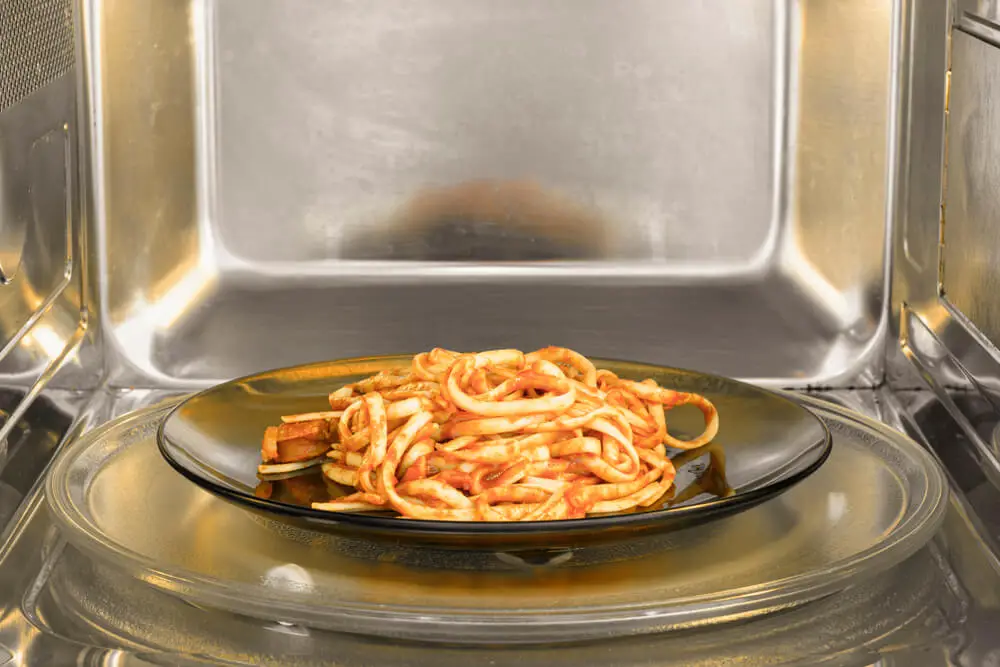
Reheating Pasta in the Boiling Water
If you have stored pasta and sauce separately, you can easily use the boiling water method to reheat your pasta.
- First, boil a pot of salted water.
- Place your noodles in a colander and dip them into the pot for around 30 to 60 seconds to warm the pasta.
- When the pasta is warmed, toss it in the sauce and serve.
Reheating on the Stove
Reheating leftover pasta on the stove is another quick fix. You can use this reheating method for both plain and sauce-coated pasta.
- Heat a pan with some olive oil or your preferred cooking oil over medium-high heat.
- Combine your pasta, sauce, and other fresh ingredients in the pan.
- Sauté for two to five minutes, or until thoroughly heated. Since this method cooks food quickly, it’s important to stir your pasta frequently to prevent browning or burning of the sauce.
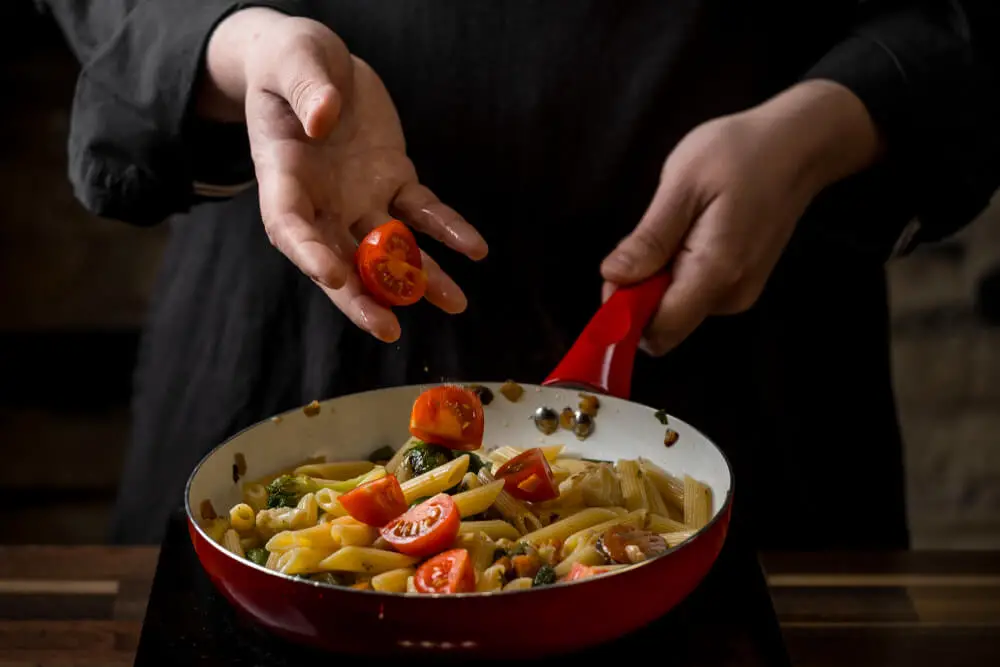
Can You Freeze Cooked Pasta with Sauce?
Yes, you can. You can freeze your pasta if you have already mixed it with sauce. It will be easier to heat it later using an oven- or microwave-safe dish.
However, If you haven’t mixed them, you will want to freeze the pasta and sauce separately because they require different times to thaw and reheat.
How to Reheat Pasta without Sauce?
Reheating pasta without sauce is the same way you cooked the pasta the first time.
Step 1: Boil some water in a big non-stick pot for pasta. Make sure there is enough water to cover the pasta completely.
Step 2: After fully boiling water, add some salt and the leftover pasta to it. Cook it for 30-60 seconds. Be careful not to overcook your pasta and turn it mushy. So, it’s better to check your pasta every 15 seconds until you feel that it has heated thoroughly.
If you want to control the time and take out your pasta faster, the best technique is to dip your pasta in boiling water using a strainer.
Step 3: Next, drain your pasta. Then, pour your sauce into a skillet and reheat it. After the sauce is heated thoroughly, add it to your reheated pasta.
Note: Never reheat plain pasta without sauce in an oven; otherwise, it will dry your pasta.
Answer to Some FAQ
How to Reheat Pasta with Cream Sauce?
If your pasta is coated with a cream-based sauce, you can easily reheat pasta in a skillet with just a little milk, water, or cream on the bottom and stir it. If you want to use milk, heat the pasta until the milk has almost dried and been absorbed into the sauce, then turn off the heat and serve it.
Another way is heating in a double boiler, but you must stir often.
Is It Safe to Reheat Pasta?
Reheated leftover pasta is safe to consume if piping hot and heated through. When the internal temperature of the pasta reaches 165 degrees F, it is safe to eat.
To be safe, during reheating frozen pasta, stir it frequently towards the end of cooking to prevent food-borne illnesses to survive.
Can You Reheat Pasta Twice?
The more you will reheat the pasta, the more the quality and texture of the pasta will decline. That’s why it’s always better to reheat as much as you can eat at a time.
Also, molds and bacteria grow more slowly when food is cold. Meanwhile, when you heat the food at a high temperature, it kills all the bacteria. But the problem happens when you need to keep the temperature between these two extreme temperatures, that is, at room temperature, where the growth of bacteria multiplies.
Wrap Up
Reheating leftover pasta, whether you have stored it in the fridge or freezer, is quite a simple procedure. Using any of the above methods, you can easily reheat your pasta.
So, if you end up with leftovers, don’t waste them. Rather store them properly to enjoy later.




